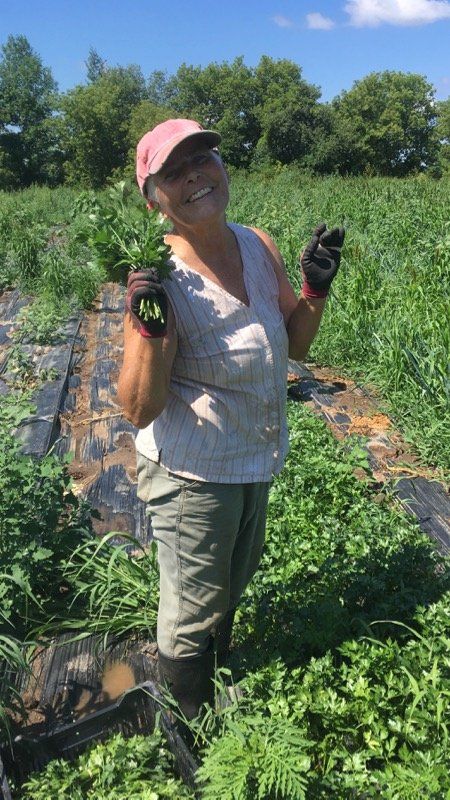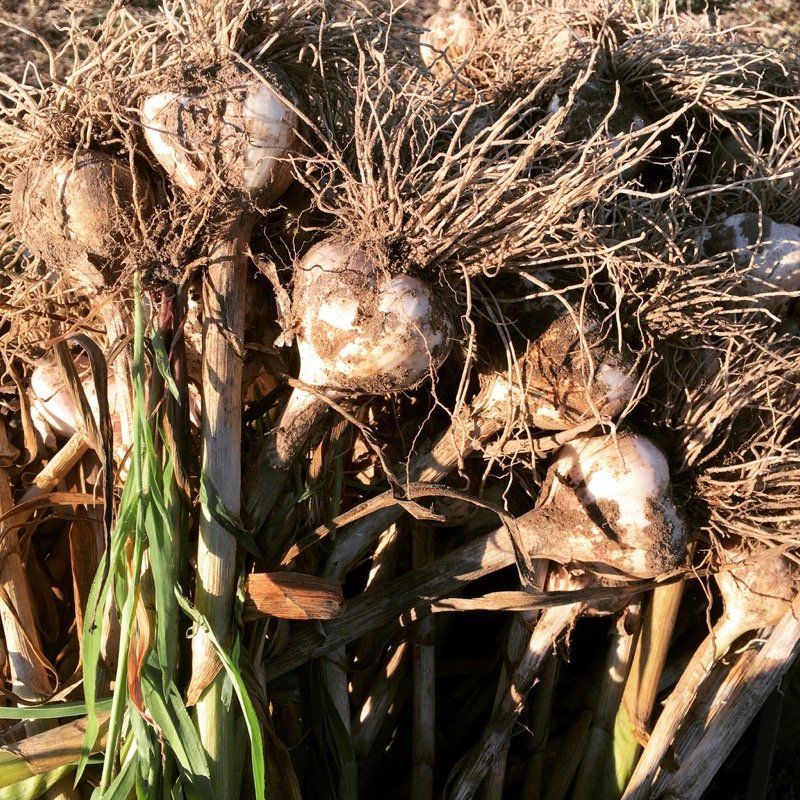Once you get your veggies home, they should keep well for you over the course of the week or even two! It's all about storing them just right. The no fuss version is to just pop it all in the fridge... but here's some more fine tuned storage ideas for you :)
Basil we send with the roots on, just tuck it in a glass or flower vase with water in the bottom to keep it happy on the counter. The leaves go black when they've been in contact with water, so keep them dry till you're ready to use them. I've also had a bucket of basil at market in the rain, and left it in the bucket with water in the bottom in my kitchen... and didn't have a single black leaf! I was sure it would all go bad - so just keep those roots in water and they'll stay much happier.
Tomatoes are on their way very soon (the first week or two will be randomly distributed as production ramps up and should continue through September). They keep best on a cool counter, while you can put them in the fridge they tend to go mealy and loose flavour. If you put them on the window sill you'll speed up their ripening. Typically we harvest them all within a couple days of being perfect. I want them to hold a few days for you, but keep your eye on them! While they're all different colours, you'll know they are ripe when there's just a little give to the flesh, much like a peach. The colours deepen and the flesh softens. An overripe tomato is squishy, but if you use them a day earlier they'll hold better in a sandwich. I'll introduce the different varieties another week :)
The fridge is the easy answer to just about everything else, but humidity requirements can vary. Have you ever noticed that your vegetable drawer's "humidity" control is just opening/blocking a hole? That's to try and keep in or let out the humidity. Things like lettuces are very sensitive, and will wilt if they're too dry - so we pack them in the plastic bag to keep in the moisture. The same is true for any leafy greens like celery and beet tops, keep them in plastic so they don't wilt. Roots can handle a bit lower humidity than the greens, but they'll go soft if the humidity is too low. We've found in the winter that we can store loose lettuce heads, radicchio, and all our types of roots best at 95% humidity. It's rare you'll be able to achieve that precision in a home setting, so just tuck them loosely in plastic (or tie up your bag) and you're good to go. Watch for condensation buildup inside your bag (or pooling on the bottom). Anywhere there is liquid water accumulating will be more prone to rot (too wet for the veggies). That's where some folks like using paper towels, it avoids the wet spot that might rot! As you learn how to store each one best, just keep an eye on them. If you see them starting to go soft, they need more humidity (so prevent it from escaping, or give them a cold water bath to refresh them). If you see them starting to rot, chances are they got too wet so dry it up a little. Plus, if you notice it right away, you can cut off the spot that's starting to go and enjoy the rest for dinner :)
p.s. That's Stephanie's Saturday night feast - after long market days we like something quick and simple. Sautéed garlic scapes and zucchini or pattypans, with a bit of homemade paprika in olive oil. Then we added the sausage, and covered the pan till they were cooked stirring occasionally. Once the sausage was mostly cooked we added the basil and the first cherry tomatoes! We'd cook up some Halloumi cheese if we were keeping it vegetarian, and it would be just as delicious on the pasta with the rich olive oil based sauce from all the veggies.




